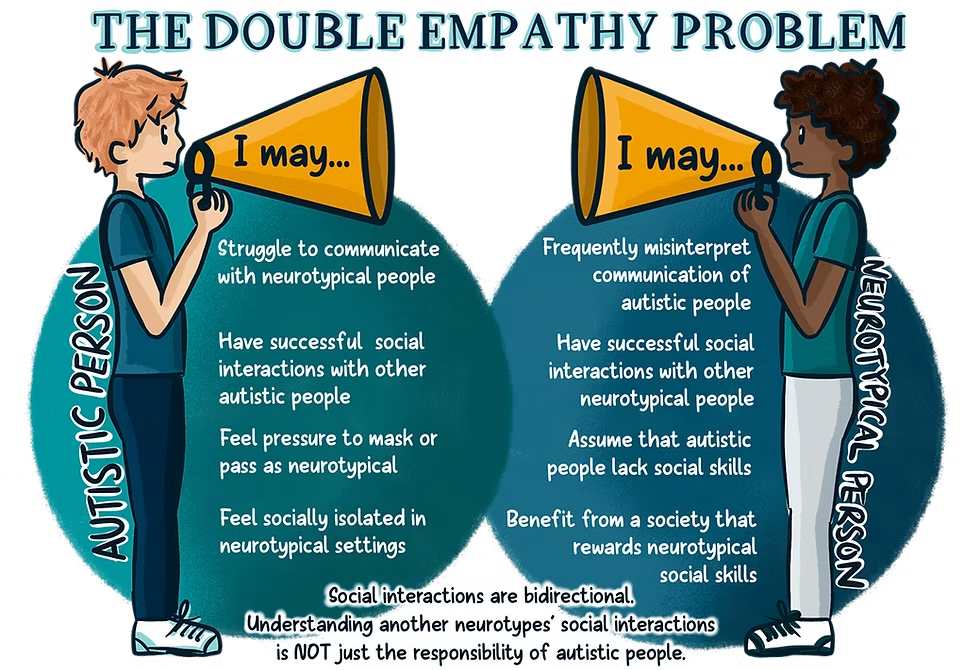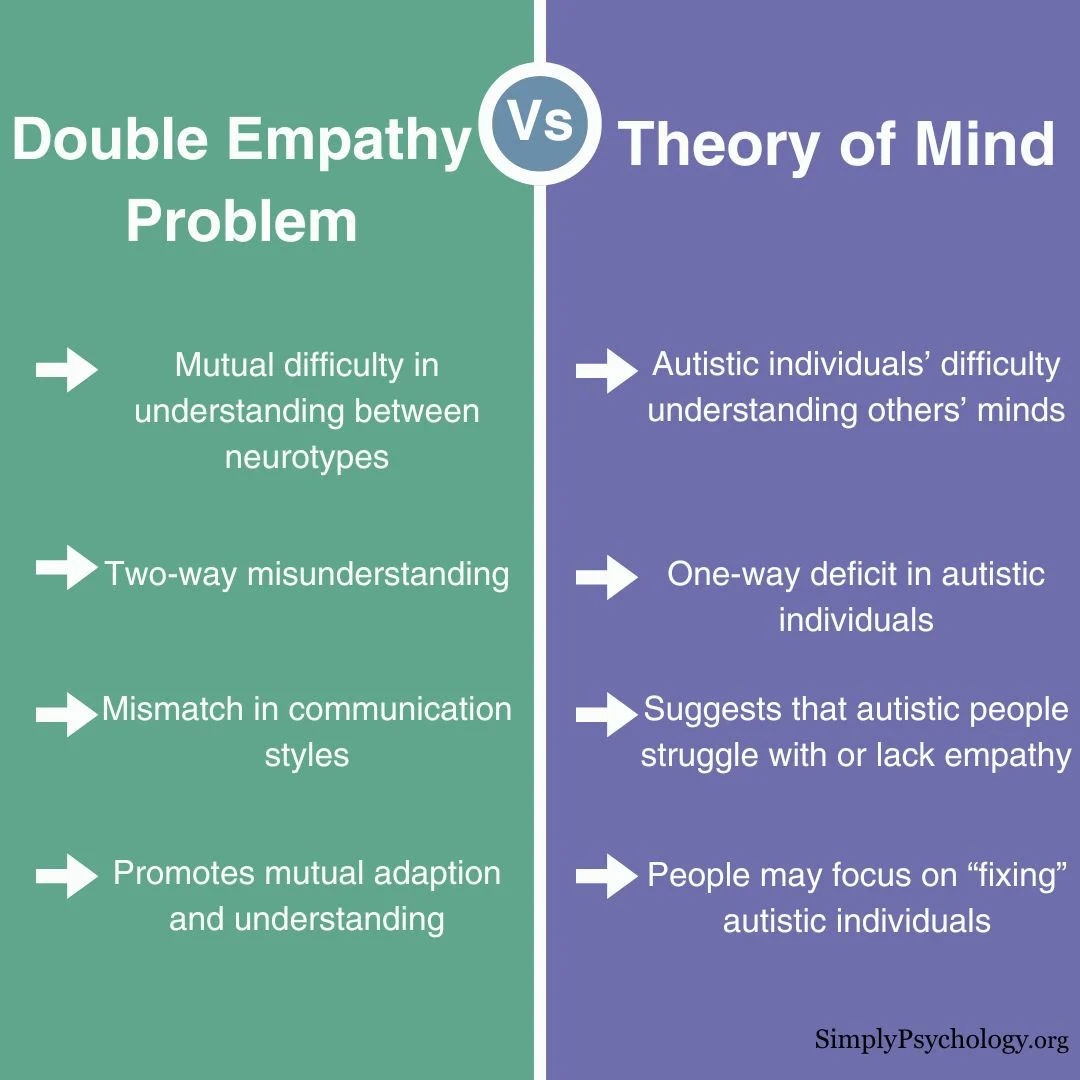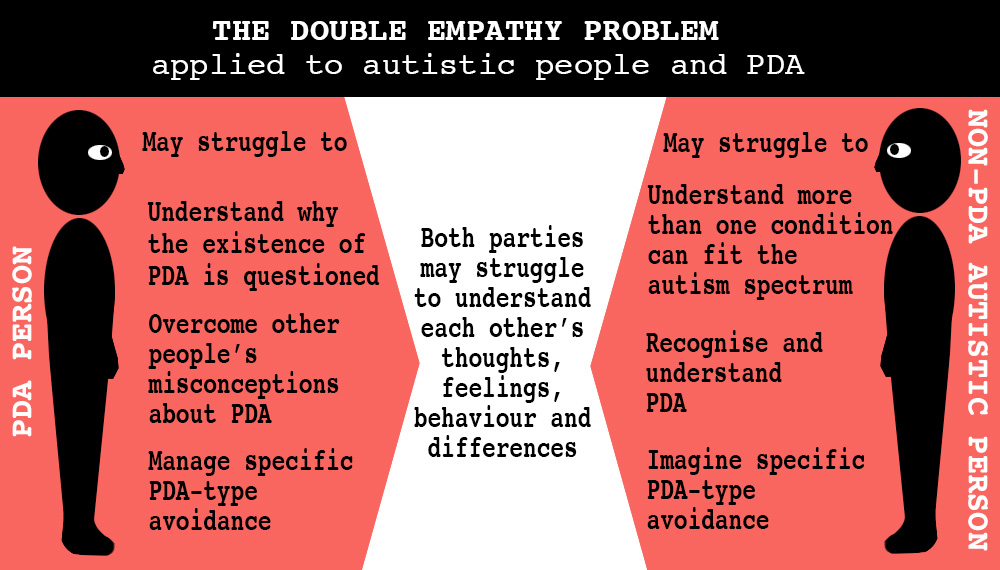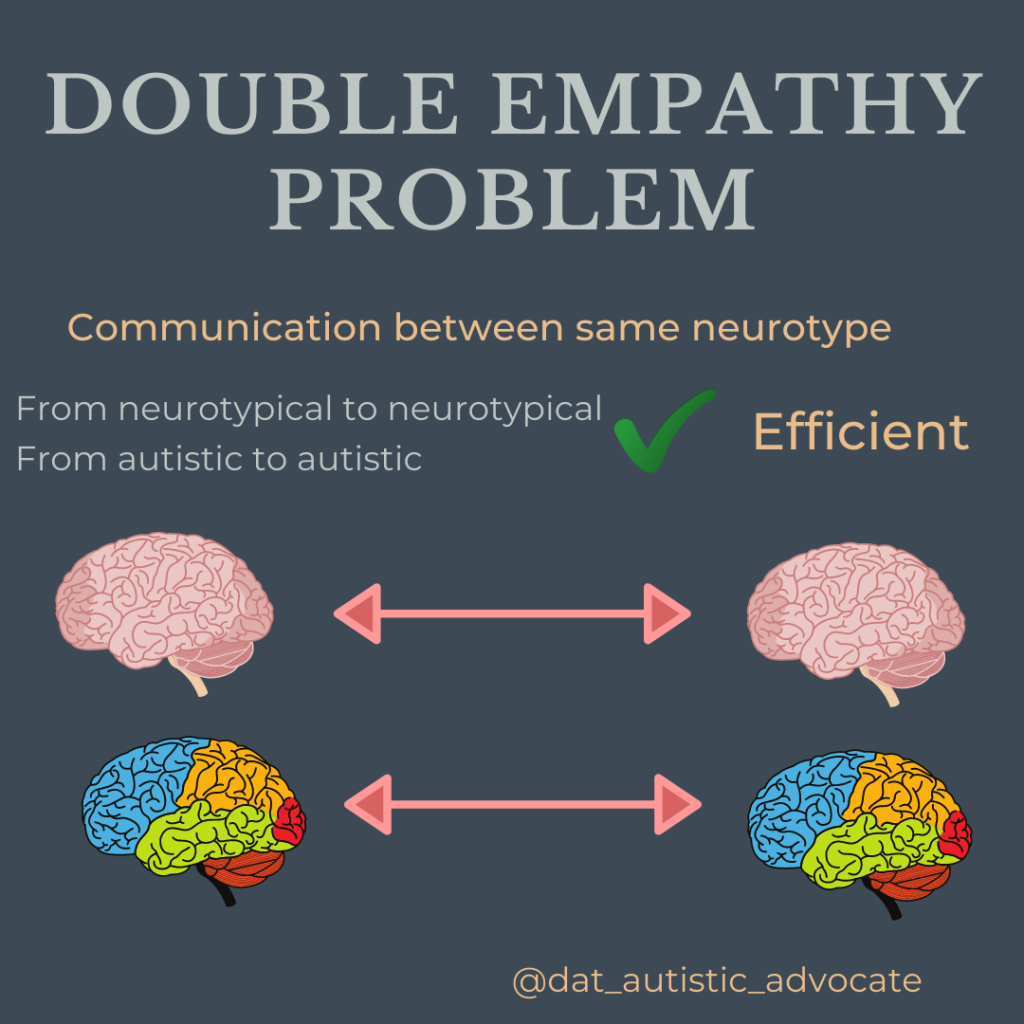- Send Us Inquiry info@autismworld.org.uk
- Emergency Help: +44 7938 641964

- May 15, 2025
- Articles, Autism
- Autism World
- 23 Comments
Bridging Communication Gaps Between Autistic and Neurotypical Individuals
Introduction
Communication is the cornerstone of human connection. Yet, when people with different cognitive experiences interact, misunderstandings are bound to happen. One such interaction challenge is between autistic and neurotypical individuals. Traditionally, communication difficulties were believed to lie solely with autistic people. However, a new understanding called the double empathy problem suggests otherwise. It highlights that communication is a two-way street, where misunderstandings stem from both parties, not just one. This article delves into what the double empathy problem is, how it manifests, and how we can bridge this gap to create a more inclusive world.

What is the Double Empathy Problem?
The double empathy problem describes the mutual difficulties autistic and neurotypical individuals experience when trying to understand each other’s thoughts, feelings, and communication styles. It’s not that one side lacks empathy — rather, each has a unique way of expressing and perceiving the world. When these differing perspectives collide, the result is often confusion, frustration, and social disconnect.
This idea challenges the outdated notion that autistic individuals inherently struggle with empathy. Instead, it posits that the breakdown in communication is shared — neurotypical individuals also have difficulty understanding autistic perspectives.
How This Differs from Traditional Views
In the past, autism was largely interpreted through a “deficit” model, where neurotypical communication was the standard, and autistic communication was seen as lacking or impaired. This view led to strategies focused solely on helping autistic individuals adapt to neurotypical norms, often ignoring the value of autistic ways of thinking and interacting.
The double empathy problem flips this script by viewing communication as a reciprocal process. Rather than placing blame or focusing solely on one group to change, it encourages mutual understanding and shared responsibility.

Understanding Communication Differences
Autistic Communication Style
-
Literal and Direct: Autistic individuals often value clarity and honesty over social conventions.
-
Focused Topics: Conversations may be more centered around specific interests rather than small talk.
-
Different Body Language: Facial expressions or gestures might not align with neurotypical expectations.
-
Sensory Sensitivity: Bright lights, loud noises, or even certain smells can affect their ability to focus on conversations.
Neurotypical Communication Style
-
Indirect Cues: Communication is often filled with subtext, tone, and body language.
-
Social Rituals: Neurotypical individuals may expect eye contact, polite phrasing, and emotional mirroring.
-
Flexibility: Conversations may drift between topics more casually, with a focus on emotional bonding.
The mismatch between these two styles can lead to the impression that the other person is disinterested, rude, or hard to understand — when in reality, they’re simply communicating differently.
Challenges That Arise
These differences in perception and expression can create real-world difficulties:
-
Autistic individuals may feel misunderstood or isolated in social settings.
-
Neurotypical individuals may interpret autistic communication as cold, awkward, or confusing.
-
Both may walk away from the same interaction feeling frustrated or judged.
Over time, these experiences can compound, leading to reduced self-confidence, reluctance to engage socially, and even mental health issues.
Why This Matters in Everyday Life
Understanding the double empathy problem isn’t just theoretical — it has practical implications for families, schools, workplaces, and healthcare. Recognizing that communication issues are shared fosters mutual respect and opens the door for better cooperation and collaboration.
Whether it’s a teacher misinterpreting a student’s silence, or a manager struggling to connect with an autistic employee, awareness of this dynamic can make a world of difference.
Ways to Bridge the Communication Gap
1. Mutual Education
Both autistic and neurotypical people can benefit from learning about each other’s communication styles. This reduces judgment and builds empathy on both sides.
2. Active Listening
Engage with the intention to understand rather than respond. Asking questions for clarification — without assuming or interrupting — encourages deeper connection.
3. Flexibility in Expression
Being open to different ways of expressing emotions or thoughts helps break down rigid social expectations.
4. Clear Communication
Avoid idioms, sarcasm, or vague language when speaking to someone who prefers directness. Likewise, explaining one’s own communication style can help set expectations.
5. Creating Safe Spaces
Provide environments where people can communicate in ways that are comfortable for them — be it written, visual, or verbal.

The Role of Technology
Technology plays an increasingly important role in supporting communication. From text-based apps and visual schedules to assistive tools, there are many platforms that empower autistic individuals to express themselves more clearly. For neurotypical users, digital tools can also help by offering insights into alternative communication styles.
Applications in Education
Schools are ideal environments to introduce concepts like neurodiversity and the double empathy problem. Educators can:
-
Promote inclusion by celebrating different communication styles.
-
Create lesson plans that accommodate various learning and interaction preferences.
-
Encourage students to express themselves in multiple ways, fostering respect and understanding early on.
Improving Workplaces
Employers can take several steps to create neurodiverse-friendly environments:
-
Offer flexible communication formats (e.g., written feedback instead of verbal).
-
Provide clear instructions and structure.
-
Promote awareness training for all employees to understand and appreciate diverse communication styles.
A more inclusive workplace doesn’t just support autistic individuals — it benefits everyone by fostering clarity, compassion, and innovation.
Inclusive Healthcare Interactions
In healthcare, communication breakdowns can have serious consequences. Medical professionals need to be especially mindful of how they interact with autistic patients. By:
-
Avoiding assumptions,
-
Allowing extra time during consultations, and
-
Ensuring clarity in explanations,
healthcare providers can deliver more effective and respectful care.
The Power of Representation
Media portrayals shape public perception. When autistic characters are shown as fully realized individuals — rather than stereotypes — they help break down myths and highlight the richness of autistic experience. This promotes greater societal empathy and a deeper understanding of how different minds work.
Policy and Advocacy
Policy makers play a role by:
-
Mandating training on neurodiversity in public services,
-
Supporting inclusive education initiatives, and
-
Funding research on mutual understanding across cognitive profiles.
Such policies create the groundwork for a more equitable society.
FAQs: Understanding the Double Empathy Problem
Q1: Is the double empathy problem only about autism?
No. While it’s most often discussed in the context of autism, the idea applies to any situation where two people experience the world in vastly different ways.
Q2: Does this mean autistic people have more empathy than previously thought?
Yes. Autistic individuals often feel deeply but may express empathy differently than what neurotypical norms expect.
Q3: Can the gap be closed?
Absolutely. Through understanding, patience, and mutual effort, communication can improve significantly.
Q4: Who should adapt more — autistic or neurotypical people?
Both. The responsibility should be shared. When both sides make efforts, outcomes are more successful and sustainable.
Q5: How can parents support their autistic children better?
By learning about their child’s unique communication style and advocating for environments that respect and support it.
Q6: Are social skills training programs helpful?
They can be — but only when they respect the autistic person’s identity and focus on mutual understanding rather than forcing conformity.
Conclusion
The double empathy problem reframes the conversation around autism and communication. Instead of focusing on deficits, it invites a new approach grounded in mutual respect and shared responsibility. By understanding that misunderstandings come from both sides — not just the autistic individual — we pave the way for more inclusive, authentic relationships. When people learn to meet in the middle, communication becomes not just possible, but powerful.
